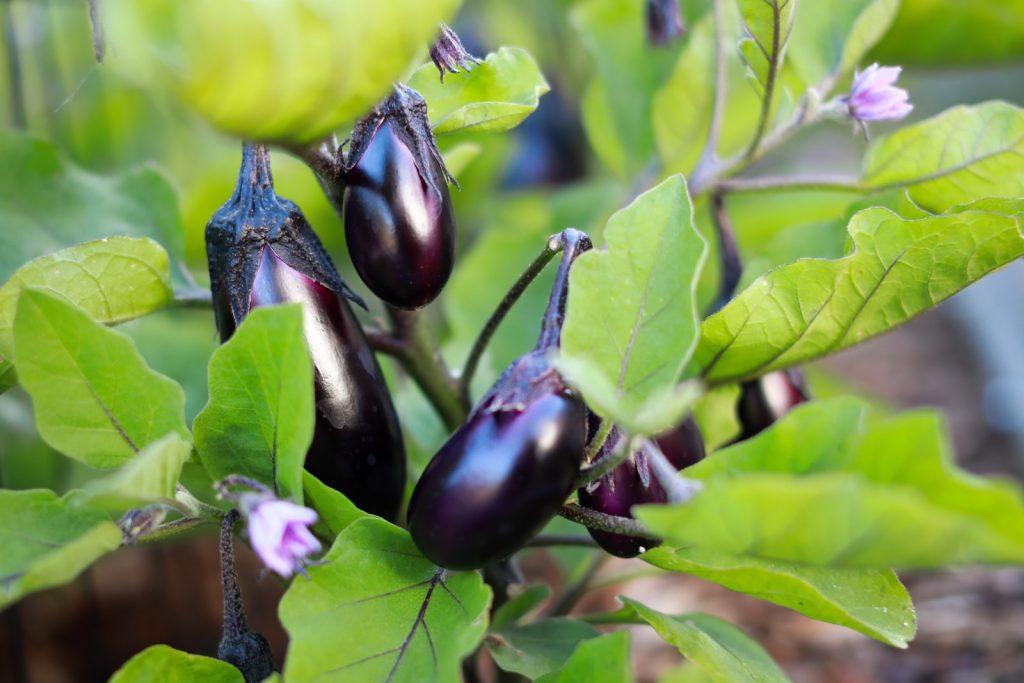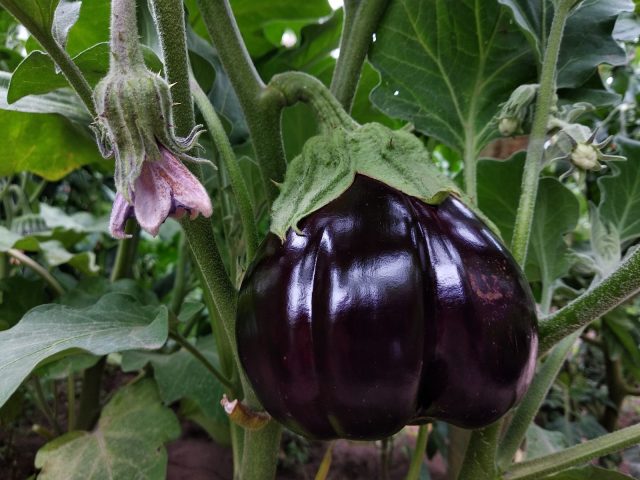Why grow Aubergine (eggplant)?
Aubergine, also known as eggplant, is famous in many gardens. It has dark purple skin and a mild taste, making it excellent for adding to salads, stir-fries, and sauces. But why should you grow aubergine in your garden? Here are some reasons why this popular vegetable is worth the time and effort.
First, aubergine is an easy plant to grow, and with the proper care and maintenance, it can thrive in warm or cooler climates with minimal effort from the gardener. In addition, its deep purple hue adds a beautiful splash of color to any garden. The vibrant hue stands out against other plants, making it an attractive option for gardeners who want something different among their flowers and shrubs.
The best time to plant Aubergine (eggplant)
When it comes to planting an aubergine (eggplant), timing is everything. Knowing when to plant your aubergine can help improve your chances of harvesting a bountiful crop of this popular vegetable. To get the best results, you should grow your aubergines in warm weather when the soil temperature is at least 21°C (70°F).
Generally speaking, the best time to plant adequate amounts of aubergine is around two months before the last frost date. To ensure optimal growth and a plentiful harvest, choose a sunny spot with plenty of room for each seedling. Make sure to space out plants about 75 centimeters apart for them to properly develop and receive enough sunlight exposure. After planting, monitor temperatures and water regularly until the fruits are ready for harvest!
Sunlight: how much sun does Aubergine (eggplant) need
Aubergine, also known as eggplant, is a popular vegetable in various dishes. For optimal health and growth, aubergine needs plenty of sunlight. But how much sun do you need to provide your plants? This article will discuss the basics of planting and caring for aubergine – including how much sunlight they need.
When growing aubergine from seed or transplanting young plants into the garden or containers, give them at least 6 hours of direct sunlight each day. If you’re planting in containers, choose those at least 10 inches deep, so the roots have plenty of room to spread out and absorb nutrients from the soil. Water deeply and frequently during dry spells; aubergine doesn’t like fluctuating moisture levels.
Temperature: what temperature range is best for Aubergine (eggplant)
Aubergine, or eggplant, is an essential vegetable in many dishes and cuisines. But for a successful harvest, it’s necessary to ensure the temperature range is suitable for this versatile veggie. To help you start your aubergine growing journey, we’ve outlined the optimal temperature range for eggplant growth. Read on to learn what temperature range is best for aubergine so you can confidently plant and care for them with success!
When planting aubergine (eggplant), the ideal soil temperature should be between 70-90 degrees Fahrenheit. For optimum growth of young seedlings, temperatures should not exceed 95 degrees Fahrenheit during the day, as higher temperatures can cause stress to young plants and slow their growth rate.
Where to plant Aubergine (eggplant)
Aubergine, also known as eggplant, has a unique flavor and texture. It’s an excellent addition to any meal and is highly versatile in the kitchen. Before you can enjoy the fruits of your labor, you need to know where to plant aubergine for optimal growth and yield. This article will provide you with all the basics you need to know about planting and caring for aubergine so that you can reap its delicious rewards. From selecting a sunny spot in your garden to understanding when harvesting time arrives, let’s look at how you can get the most out of your aubergine crop. With proper care, knowledge, and patience, it’s easy to have success growing this delicious veggie in your home garden!
Pots: what size pots are best for Aubergine (eggplant)?
When it comes to planting eggplant, choosing the right pot size is essential. The ideal pot size for growing eggplants will depend on the variety of eggplant you produce and how much space you have available. If you’re short on space, consider a smaller container; however, larger containers will allow the roots of your plants to spread more freely and provide more room for growth.
To get the best results from your eggplants, look for pots at least 12 inches in diameter or larger, if possible. When filling your containers with soil, select one that is loose and well-draining, as this will help promote root growth and healthy plant development. To help retain moisture, add some compost or mulch around the base of your plants too.
Soil: what type of soil is best for Aubergine (eggplant)?
Soil is essential in planting and caring for aubergine (eggplant). Choosing the right type of soil is necessary to get the best results. Loose, well-draining soil with a slightly acidic pH level is ideal for eggplants. It should also be high in organic matter and have plenty of nutrients. Adding compost or aged manure can provide necessary nutrients and improve the quality of the soil. Before you begin planting, please ensure that the ground you are using has been tested for pH levels and nutrient content to ensure optimal conditions for your eggplants. With proper care and a good soil foundation, your aubergines will thrive! Check out this article to learn more about how to plant and care for aubergine (eggplant).
How to plant Aubergine (eggplant)?
When planting eggplant, gardeners must ensure they have suitable soil and climate for successful growth. Eggplant is a warm-season vegetable that requires plenty of sunshine and nutrient-rich soil for sound production. Planting eggplant in the early summer months when temperatures are warmer helps ensure a healthy crop.
To plant an aubergine (eggplant), you first need to prepare the soil by adding organic matter such as compost or manure and loosening it up with a spade or fork. It’s essential to space seedlings 12-18 inches apart, depending on the variety of eggplant you’re planting, and keep them well watered throughout their growing season so they produce larger fruits. When transplanting from a pot or starter tray, please ensure you place the entire root ball in the ground at the same depth it was in its previous container.
Watering Aubergine (eggplant)
Aubergine, also known as eggplant, is a versatile vegetable with many health benefits, including being low in calories and containing numerous vitamins and minerals. However, it can be tricky to grow this beloved summer veggie if you don’t know the basics. To start your aubergine garden with success, read on for some essential tips for planting and caring for these delicate plants. You will find all the information needed here on how to plant and care for aubergine (eggplant), from how much water they need to when to harvest them correctly.
Fertilizing Aubergine (eggplant)
Aubergine, or eggplant, is widely enjoyed for its unique and delicious flavor. Growing your aubergine can be rewarding, but you must properly plant and care for it. Fertilizing is one essential part of the equation; here are some tips on how to do it correctly.
When fertilizing an aubergine, use a slow-release fertilizer that contains balanced amounts of nitrogen and potassium. Nitrogen will help the foliage grow, while potassium will encourage healthy fruit production. Another option is to mix a teaspoon of Epsom salts in a gallon of water and apply this mixture around the base of each plant every month or two during warm weather. This will provide additional magnesium, which aids in fruit development and helps with overall soil fertility.
Pruning Aubergine (eggplant)
Pruning aubergine (eggplant) is essential for a successful harvest. Pruning helps to promote plant growth, reduce pest and disease problems, and increase the size of the fruit. Understanding the basics of pruning an aubergine (eggplant) is critical to get the best results possible. This article will give you all the information you need to start pruning your aubergine (eggplant).
When pruning an aubergine (eggplant), it’s best to start when they are young plants still in their juvenile stage. During this period, it’s advisable to pinch off any new growth that appears above the first set of leaves, as this can help encourage bushier growth.
Harvesting: when and how to harvest Aubergine (eggplant)?
Harvesting aubergines (eggplants) is critical in growing this nutritious vegetable. It is essential to know when and how to harvest your eggplants to enjoy their full flavor and nutrition. Knowing the right time for harvesting and how to do it properly will help ensure you get the most out of your aubergine crop.
It generally takes 60-90 days for eggplant crops to reach maturity. However, depending on the variety, some can take as little as 45 days, while others may need up to 120 days before they are ready to be harvested. The best way to tell if an aubergine is ripe is by feeling its skin – it should be firm but not hard, with a glossy sheen.

Troubleshooting common problems with Aubergine (eggplant)
Aubergine, also commonly known as eggplant, is a popular vegetable in many dishes worldwide. It’s easy to grow and care for, but it can sometimes be difficult when troubleshooting common problems associated with it. Fortunately, there are steps you can take to ensure your aubergine plants remain healthy and productive. In this article, we’ll discuss some of the most common issues that arise when planting and caring for an aubergine plant – from germination issues to disease prevention – and ways to solve them so you can enjoy a successful harvest come autumn. So if you’re having trouble getting your aubergines off the ground and want to know how best to look after them once they’re planted, read on!






























